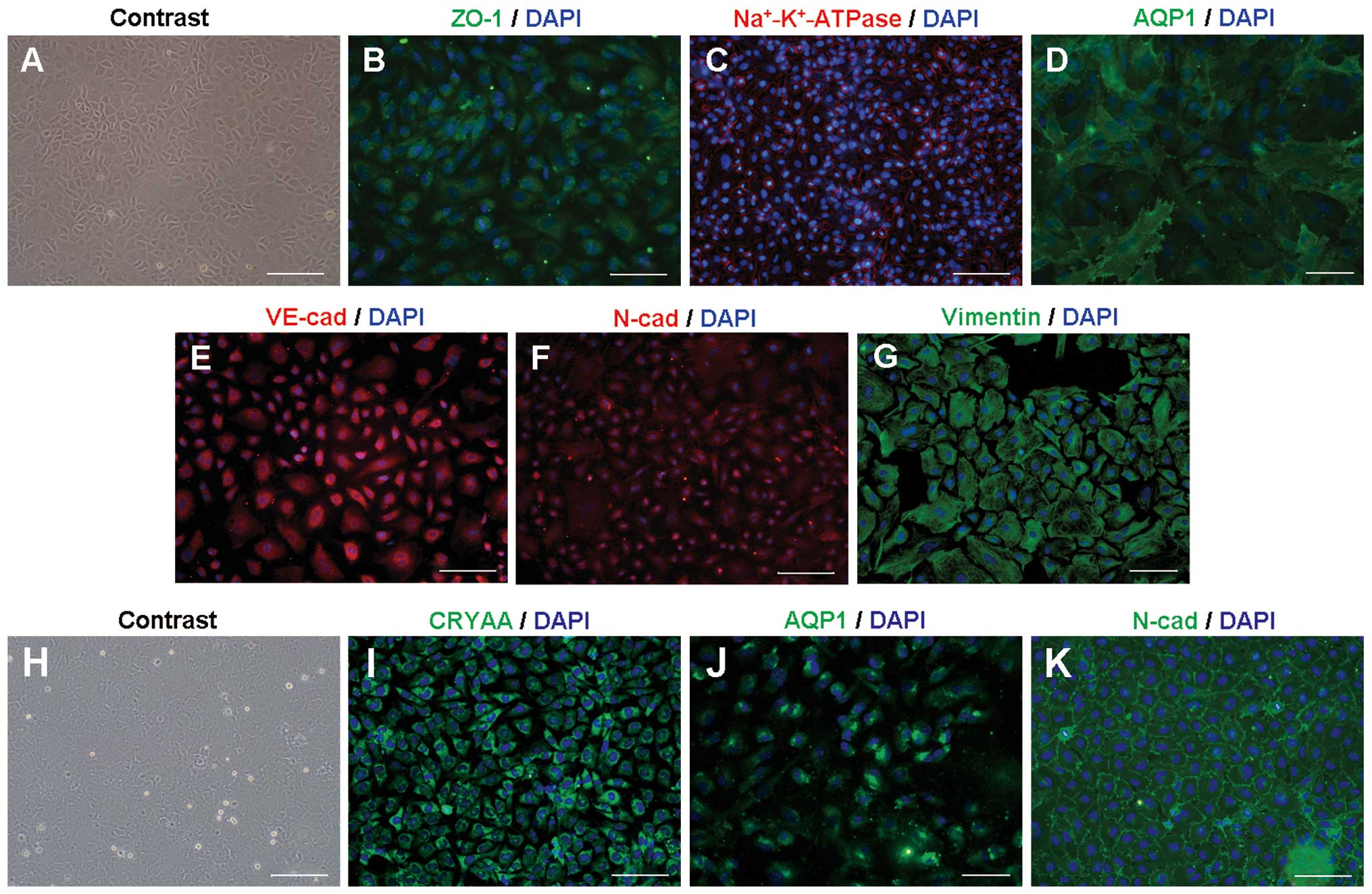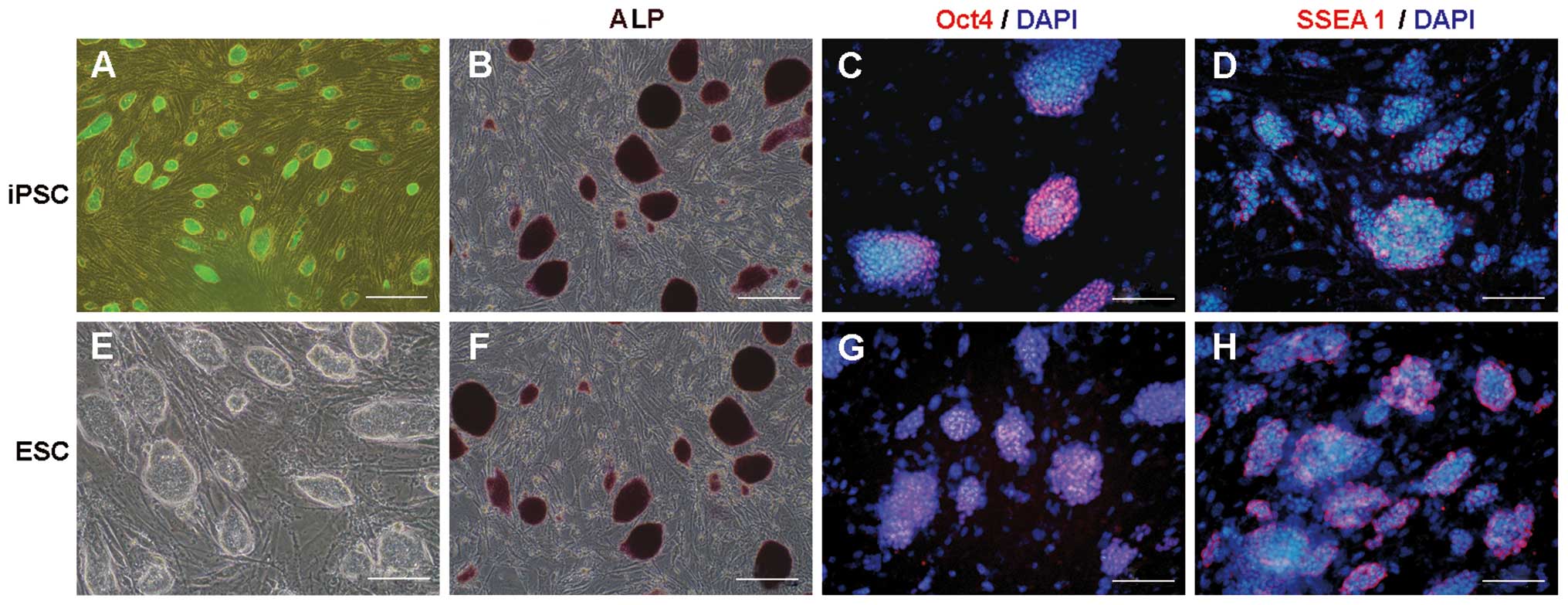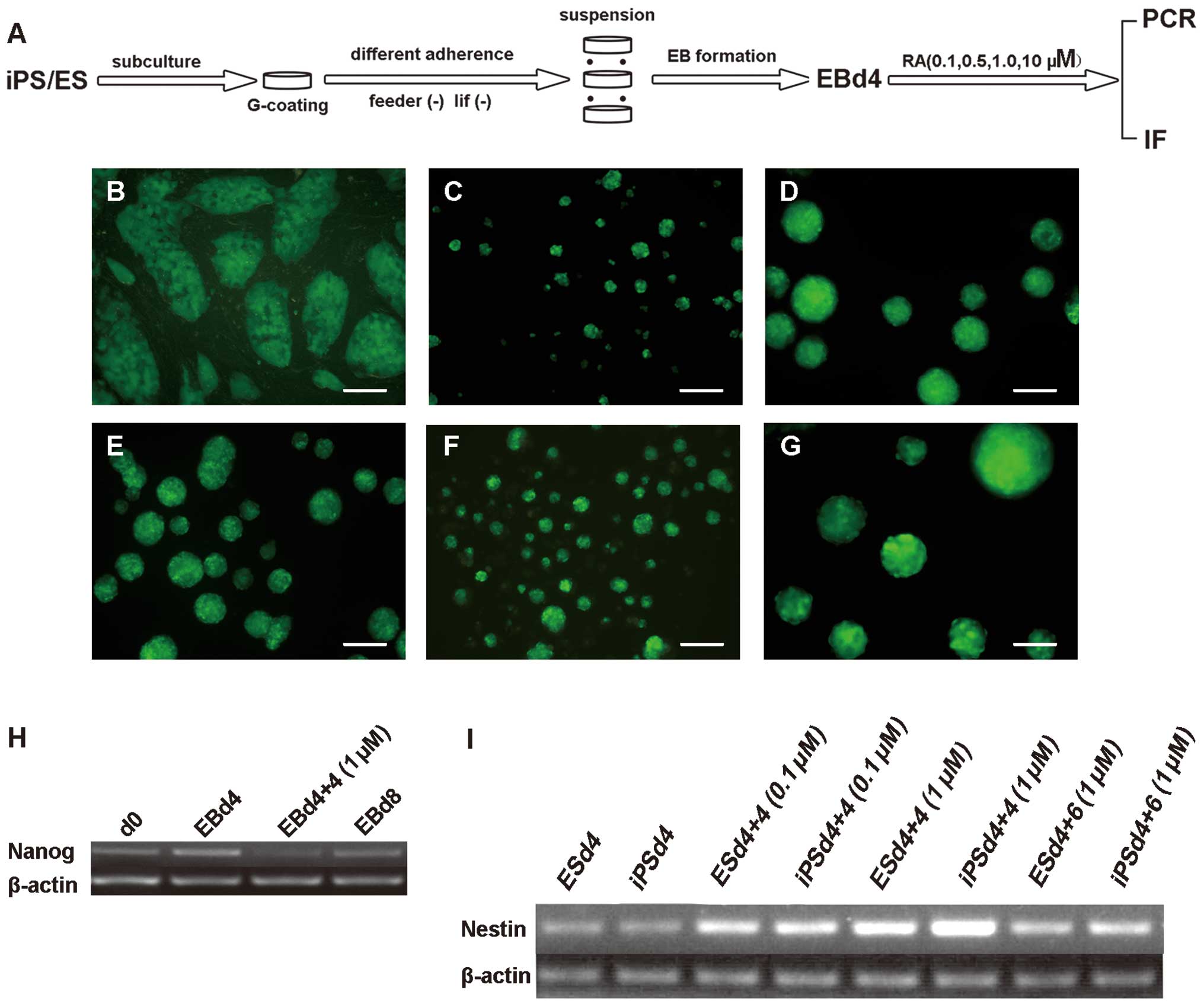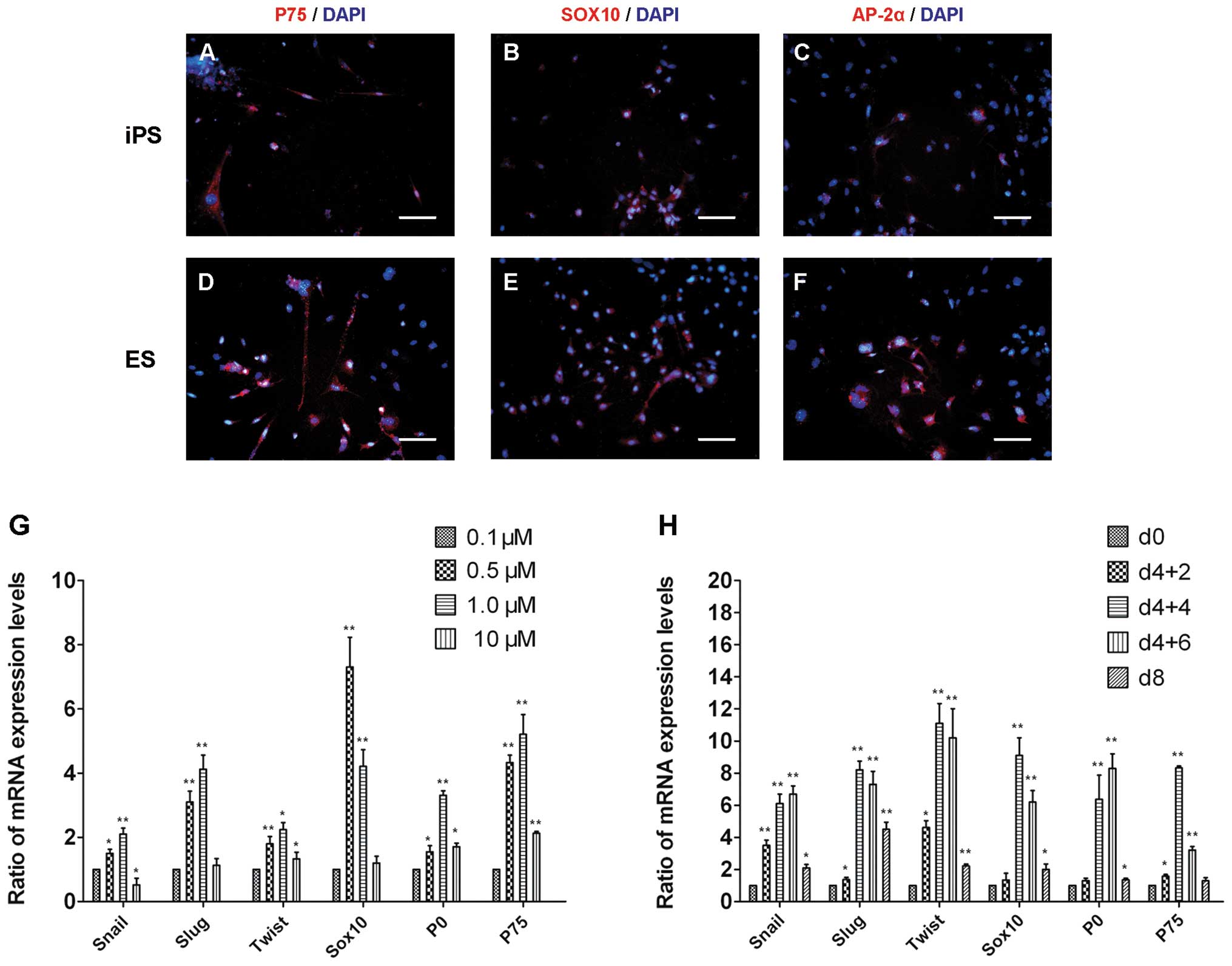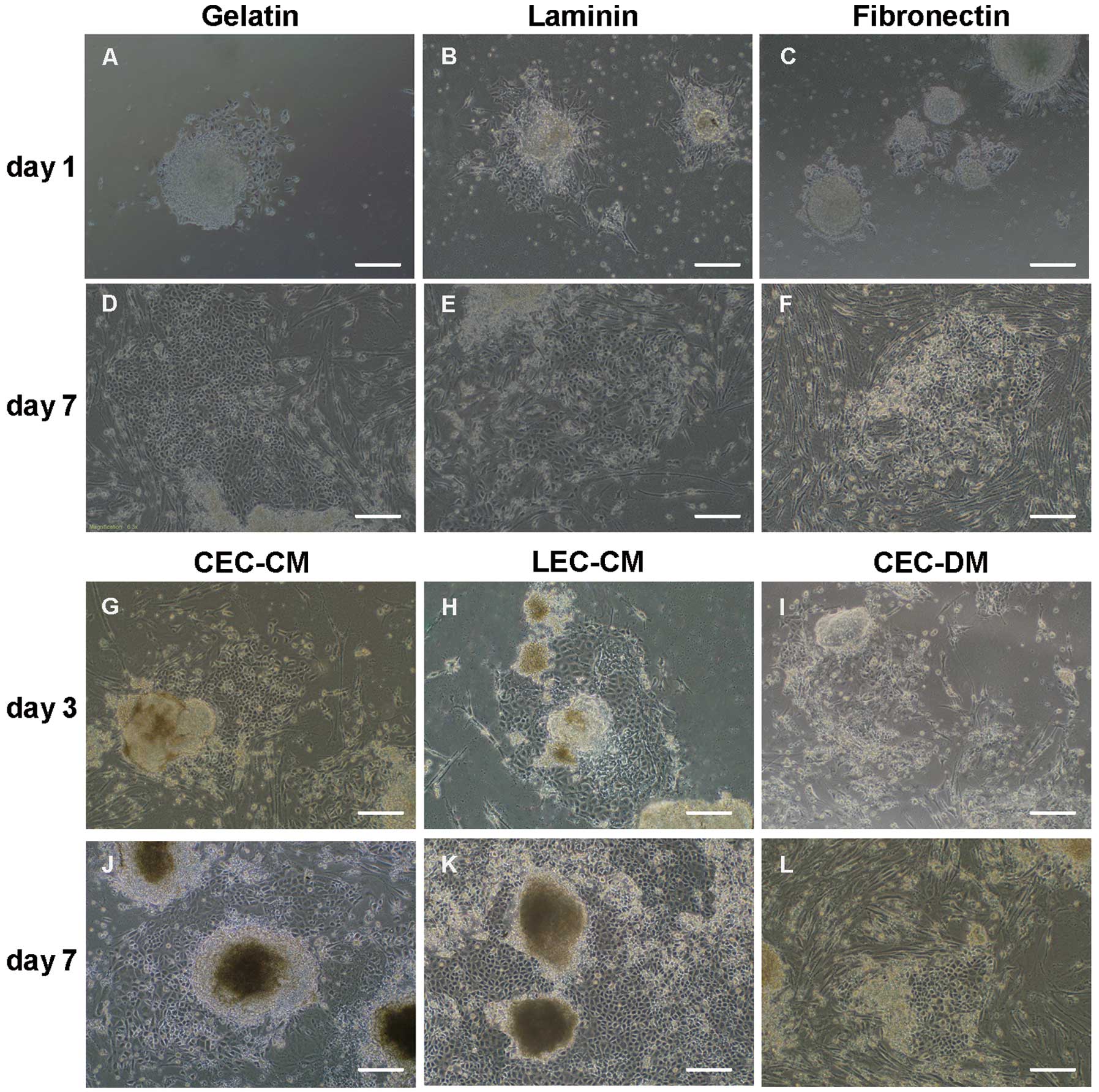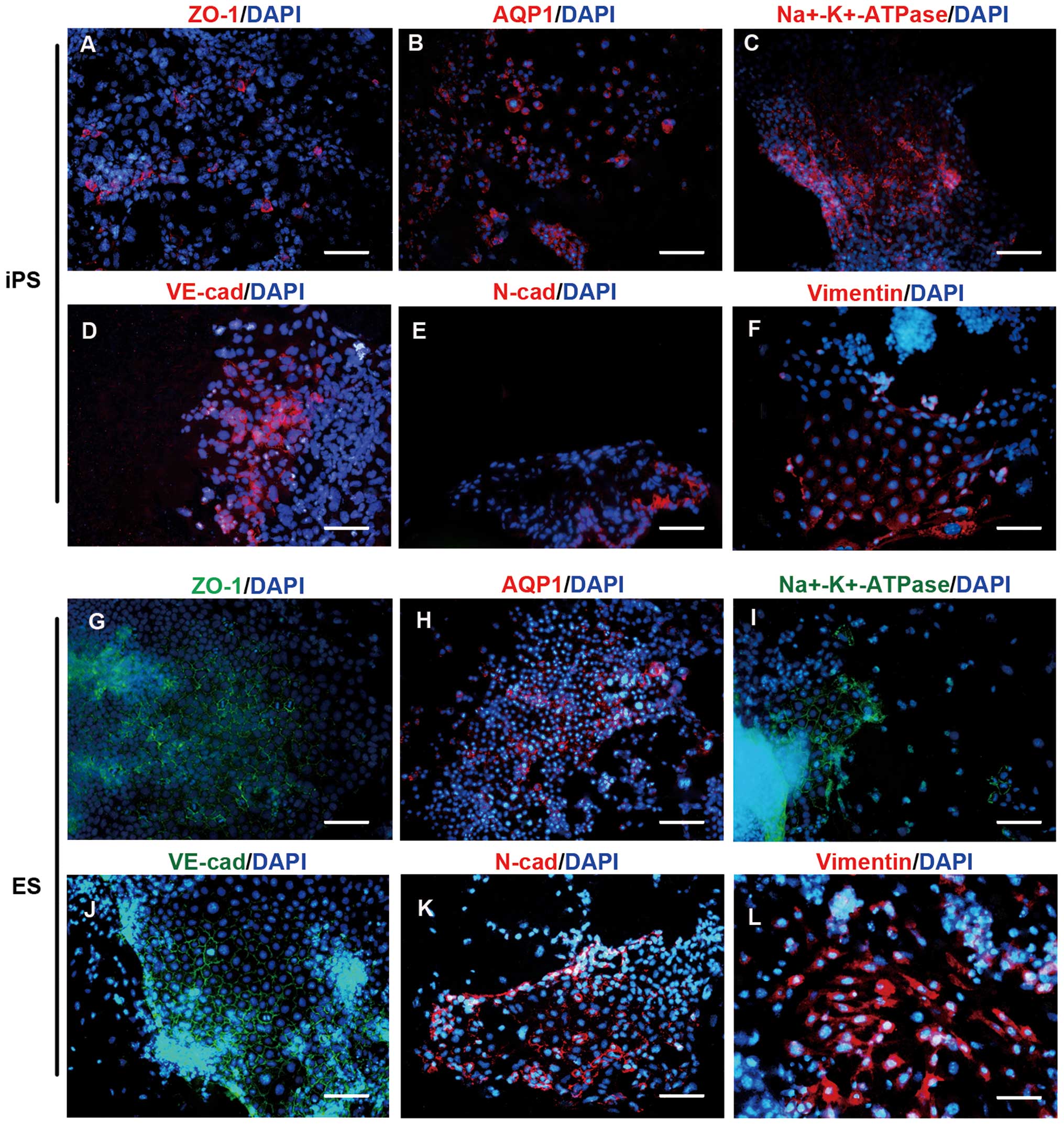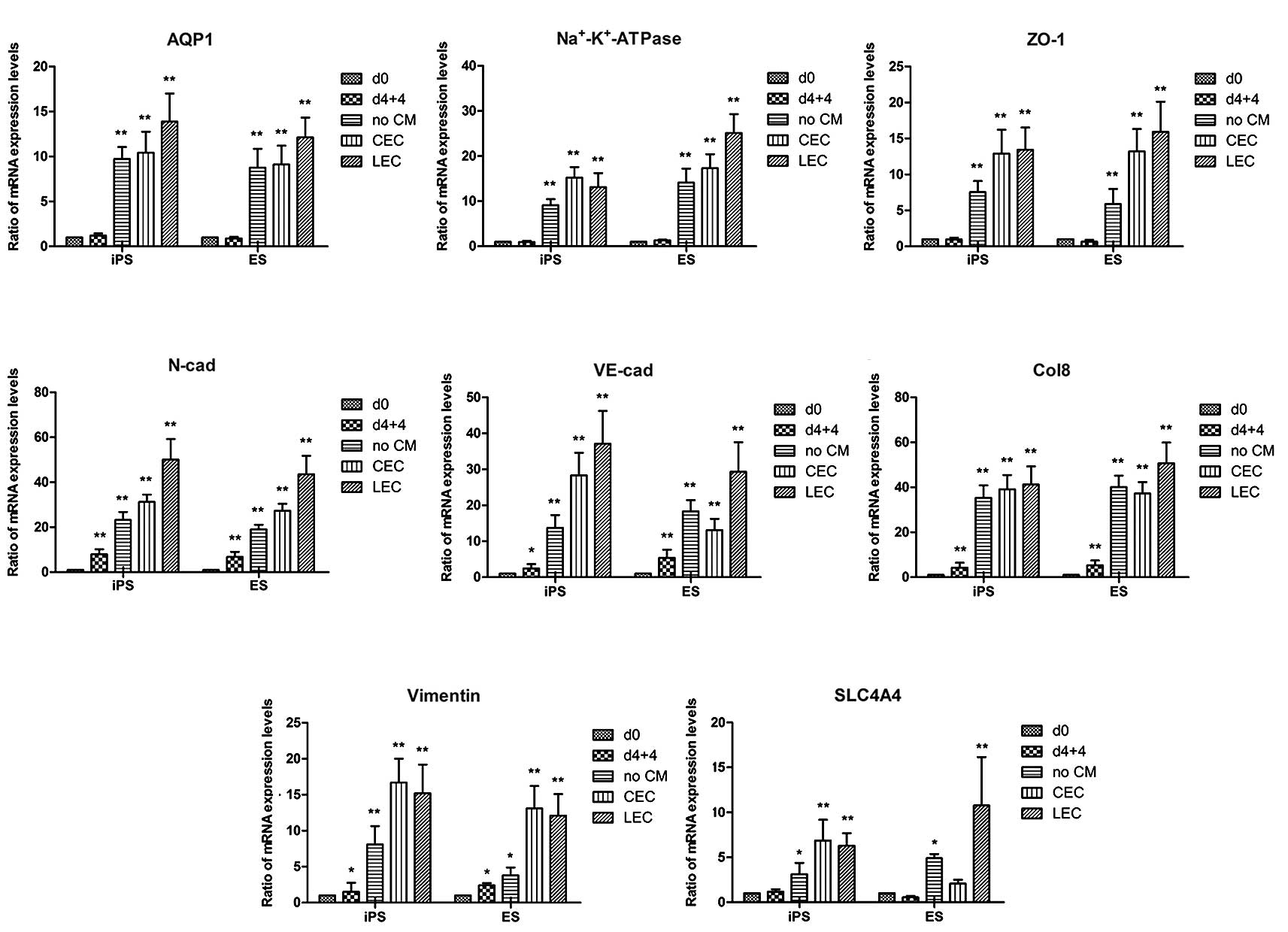|
1
|
Li C, Yu H, Ma Y, et al:
Germline-competent mouse-induced pluripotent stem cell lines
generated on human fibroblasts without exogenous leukemia
inhibitory factor. PloS One. 4:e67242009. View Article : Google Scholar : PubMed/NCBI
|
|
2
|
Chen H, Fan X, Xia J, et al: Electrospun
chitosan-graft-poly
(epsilon-caprolactone)/poly(epsilon-caprolactone) nanofibrous
scaffolds for retinal tissue engineering. Int J Nanomedicine.
6:453–461. 2011.
|
|
3
|
Pfaffl MW: A new mathematical model for
relative quantification in real-time RT-PCR. Nucleic Acids Res.
29:e452001. View Article : Google Scholar : PubMed/NCBI
|
|
4
|
Kang L and Gao S: Pluripotency of induced
pluripotent stem cells. J Anim Sci Biotechnol. 3:52012. View Article : Google Scholar : PubMed/NCBI
|
|
5
|
Grabel L: Prospects for pluripotent stem
cell therapies: into the clinic and back to the bench. J Cell
Biochem. 113:381–387. 2012. View Article : Google Scholar
|
|
6
|
Sugawara T, Nishino K, Umezawa A and
Akutsu H: Investigating cellular identity and manipulating cell
fate using induced pluripotent stem cells. Stem Cell Res Ther.
3:82012.PubMed/NCBI
|
|
7
|
Okita K, Yamakawa T, Matsumura Y, et al:
An efficient nonviral method to generate integration-free
human-induced pluripotent stem cells from cord blood and peripheral
blood cells. Stem Cells. 31:458–466. 2013. View Article : Google Scholar
|
|
8
|
Bard JB, Hay ED and Meller SM: Formation
of the endothelium of the avian cornea: a study of cell movement in
vivo. Dev Biol. 42:334–361. 1975. View Article : Google Scholar : PubMed/NCBI
|
|
9
|
Gage PJ, Rhoades W, Prucka SK and Hjalt T:
Fate maps of neural crest and mesoderm in the mammalian eye. Invest
Ophthalmol Vis Sci. 46:4200–4208. 2005. View Article : Google Scholar : PubMed/NCBI
|
|
10
|
Genis-Galvez JM: Role of the lens in the
morphogenesis of the iris and cornea. Nature. 210:209–210. 1966.
View Article : Google Scholar : PubMed/NCBI
|
|
11
|
Yue W, Pi QM, Zhang WJ, et al: Platelet
endothelial cell adhesion molecule-1, stage-specific embryonic
antigen-1, and Flk-1 mark distinct populations of mouse embryonic
stem cells during differentiation toward hematopoietic/endothelial
cells. Stem Cells Dev. 19:1937–1948. 2010. View Article : Google Scholar : PubMed/NCBI
|
|
12
|
Li C, Wu Q, Liu B, et al: Detection and
validation of circulating endothelial cells, a blood-based
diagnostic marker of acute myocardial infarction. PLoS One.
8:e584782013. View Article : Google Scholar : PubMed/NCBI
|
|
13
|
Yao Y, Wang L, Zhang H, et al: A novel
anticancer therapy that simultaneously targets aberrant p53 and
Notch activities in tumors. PLoS One. 7:e466272012. View Article : Google Scholar : PubMed/NCBI
|
|
14
|
Akanuma H, Qin XY, Nagano R, et al:
Identification of stage-specific gene expression signatures in
response to retinoic acid during the neural differentiation of
mouse embryonic stem cells. Front Genet. 3:1412012. View Article : Google Scholar : PubMed/NCBI
|
|
15
|
Wang X, Wang J, Huang V, Place RF and Li
LC: Induction of NANOG expression by targeting promoter sequence
with small activating RNA antagonizes retinoic acid-induced
differentiation. Biochem J. 443:821–828. 2012. View Article : Google Scholar : PubMed/NCBI
|
|
16
|
Paulsen BS, Souza CS, Chicaybam L, et al:
Agathisflavone enhances retinoic acid-induced neurogenesis and its
receptors alpha and beta in pluripotent stem cells. Stem Cells Dev.
20:1711–1721. 2011. View Article : Google Scholar : PubMed/NCBI
|
|
17
|
Kumar M, Bagchi B, Gupta SK, Meena AS,
Gressens P and Mani S: Neurospheres derived from human embryoid
bodies treated with retinoic acid show an increase in nestin and
ngn2 expression that correlates with the proportion of tyrosine
hydroxylase-positive cells. Stem Cells Dev. 16:667–681. 2007.
View Article : Google Scholar : PubMed/NCBI
|
|
18
|
Prasad MS, Sauka-Spengler T and LaBonne C:
Induction of the neural crest state: control of stem cell
attributes by gene regulatory, post-transcriptional and epigenetic
interactions. Dev Biol. 366:10–21. 2012. View Article : Google Scholar : PubMed/NCBI
|
|
19
|
Strobl-Mazzulla PH and Bronner ME:
Epithelial to mesenchymal transition: new and old insights from the
classical neural crest model. Semin Cancer Biol. 22:411–416. 2012.
View Article : Google Scholar : PubMed/NCBI
|
|
20
|
Brafman DA, Phung C, Kumar N and Willert
K: Regulation of endodermal differentiation of human embryonic stem
cells through integrin-ECM interactions. Cell Death Differ.
20:369–381. 2013. View Article : Google Scholar :
|
|
21
|
Rowland TJ, Blaschke AJ, Buchholz DE,
Hikita ST, Johnson LV and Clegg DO: Differentiation of human
pluripotent stem cells to retinal pigmented epithelium in defined
conditions using purified extracellular matrix proteins. J Tissue
Eng Regen Med. 2012.PubMed/NCBI
|
|
22
|
Shao C, Fu Y, Lu W and Fan X: Bone
marrow-derived endothelial progenitor cells: a promising
therapeutic alternative for corneal endothelial dysfunction. Cells
Tissues Organs. 193:253–263. 2011. View Article : Google Scholar
|
|
23
|
Ju C, Zhang K and Wu X: Derivation of
corneal endothelial cell-like cells from rat neural crest cells in
vitro. PLoS One. 7:e423782012. View Article : Google Scholar : PubMed/NCBI
|
|
24
|
Ishizaki Y, Voyvodic JT, Burne JF and Raff
MC: Control of lens epithelial cell survival. J Cell Biol.
121:899–908. 1993. View Article : Google Scholar : PubMed/NCBI
|
|
25
|
Sugino IK, Rapista A, Sun Q, et al: A
method to enhance cell survival on Bruch’s membrane in eyes
affected by age and age-related macular degeneration. Invest
Ophthalmol Vis Sci. 52:9598–9609. 2011. View Article : Google Scholar : PubMed/NCBI
|
|
26
|
Hatou S, Yoshida S, Higa K, et al:
Functional corneal endothelium derived from corneal stroma stem
cells of neural crest origin by retinoic acid and Wnt/beta-catenin
signaling. Stem Cells Dev. 22:828–839. 2013. View Article : Google Scholar
|















